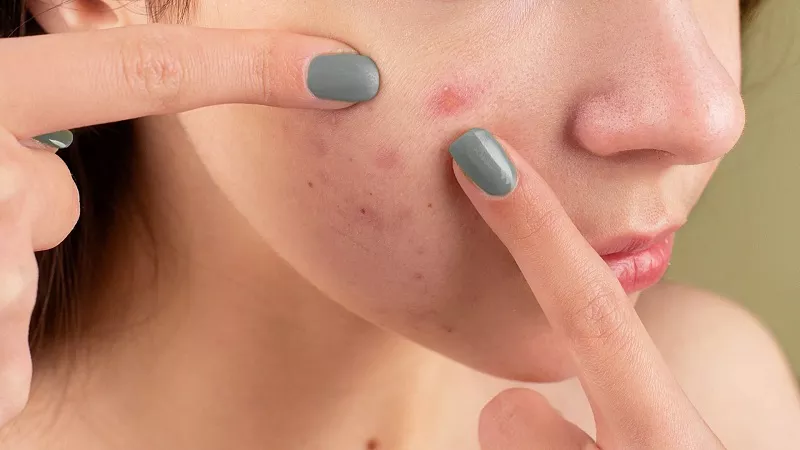Pimples are a common skin condition that can leave behind unsightly marks, often causing distress and affecting self-confidence. While the pimple itself may disappear after a few days, the marks it leaves behind can linger for weeks or even months. Fortunately, various treatments are available to help fade pimple marks and restore smooth, clear skin. In this article, we’ll explore the different types of pimple marks, the factors influencing their formation, and effective treatment options for removing them.
Understanding Pimple Marks
Types of Pimple Marks
Pimple marks, also known as post-inflammatory hyperpigmentation (PIH) or post-acne marks, can manifest in different forms depending on the skin’s response to inflammation caused by acne lesions. Common types of pimple marks include:
Hyperpigmentation: This type of pimple mark appears as dark spots or patches on the skin. It occurs when melanin, the pigment responsible for skin color, is overproduced in response to inflammation, resulting in areas of increased pigmentation.
Erythema: Erythema refers to redness or discoloration of the skin caused by dilated blood vessels and inflammation. Pimple marks with erythema appear as red or pink spots and may gradually fade over time.
Atrophic Scars: In some cases, severe or repeated inflammation from acne can lead to atrophic scars, which are sunken or depressed areas of the skin. These scars result from the loss of collagen and elastin during the healing process.
Factors Influencing Pimple Marks
Several factors contribute to the formation and severity of pimple marks, including:
Skin Type: Individuals with darker skin tones are more prone to developing hyperpigmentation due to increased melanin production.
Severity of Acne: Severe or cystic acne lesions are more likely to cause significant inflammation and scarring, leading to persistent pimple marks.
Genetics: Genetic factors can influence an individual’s predisposition to developing pimple marks and the effectiveness of treatment options.
Sun Exposure: Exposure to ultraviolet (UV) radiation can exacerbate pimple marks by stimulating melanin production and worsening hyperpigmentation.
Post-Inflammatory Response: The skin’s response to inflammation varies among individuals, with some experiencing more pronounced hyperpigmentation or scarring than others.
Treatment Options for Pimple Marks
Topical Treatments
Retinoids: Topical retinoids, such as tretinoin and adapalene, are derivatives of vitamin A that promote cell turnover and help fade pimple marks over time. They work by increasing the shedding of dead skin cells and stimulating collagen production, resulting in smoother, more even-toned skin.
Hydroquinone: Hydroquinone is a skin-lightening agent that inhibits melanin production, effectively reducing hyperpigmentation associated with pimple marks. It is often used in combination with other ingredients, such as retinoids or corticosteroids, for enhanced efficacy.
Vitamin C: Topical vitamin C serums contain antioxidants that help brighten the skin and fade hyperpigmentation. Vitamin C also promotes collagen synthesis, which can improve the appearance of atrophic scars and uneven texture.
In-Office Procedures
Chemical Peels: Chemical peels involve the application of a chemical solution to the skin, which exfoliates the outermost layer and stimulates collagen production. This can help improve the appearance of pimple marks, reduce hyperpigmentation, and enhance overall skin texture.
Microneedling: Microneedling, also known as collagen induction therapy, involves using a device with fine needles to create micro-injuries in the skin. This stimulates the body’s natural healing response, leading to increased collagen production and improvement in pimple marks and atrophic scars.
Laser Therapy: Laser treatments target specific pigments in the skin, such as melanin, to reduce hyperpigmentation and fade pimple marks. Different types of lasers, such as fractional laser therapy or intense pulsed light (IPL), may be used depending on the individual’s skin type and the severity of the pimple marks.
Home Remedies and Natural Treatments
Aloe Vera: Aloe vera gel has soothing and anti-inflammatory properties that can help reduce redness and inflammation associated with pimple marks. It also promotes wound healing and may aid in fading hyperpigmentation over time.
Honey: Honey is a natural humectant that helps moisturize the skin and promote healing. Its antibacterial properties can also prevent infection in acne lesions, reducing the risk of post-inflammatory hyperpigmentation.
Lemon Juice: Lemon juice contains citric acid, which has exfoliating properties that can help lighten pimple marks and improve overall skin tone. However, lemon juice can be irritating to sensitive skin and should be diluted with water before application.
Prevention and Maintenance
In addition to treating existing pimple marks, it is essential to prevent new ones from forming and maintain overall skin health. Some preventive measures and maintenance strategies include:
Sun Protection: Wearing sunscreen with a high SPF can prevent UV-induced damage and reduce the risk of hyperpigmentation and erythema.
Gentle Skincare Routine: Avoid harsh or abrasive skincare products that can irritate the skin and exacerbate pimple marks. Opt for gentle cleansers, moisturizers, and exfoliants formulated for your skin type.
Avoid Picking or Squeezing: Picking or squeezing pimples can increase inflammation and damage the skin, leading to more severe pimple marks and scarring. Practice hands-off skincare and refrain from touching your face unnecessarily.
Healthy Lifestyle Choices: Eating a balanced diet, staying hydrated, getting enough sleep, and managing stress can all contribute to healthier skin and faster healing of pimple marks.
Conclusion
Pimple marks can be a persistent concern for many individuals, but effective treatment options are available to help fade them and restore smooth, clear skin. Whether through topical treatments, in-office procedures, home remedies, or preventive measures, addressing pimple marks requires a comprehensive approach tailored to individual skin type and concerns. By understanding the factors influencing pimple mark formation and choosing appropriate treatment strategies, individuals can achieve the desired results and regain confidence in their skin’s appearance.
[inline_related_posts title=”You Might Be Interested In” title_align=”left” style=”list” number=”6″ align=”none” ids=”6468,6465,6462″ by=”categories” orderby=”rand” order=”DESC” hide_thumb=”no” thumb_right=”no” views=”no” date=”yes” grid_columns=”2″ post_type=”” tax=””]































